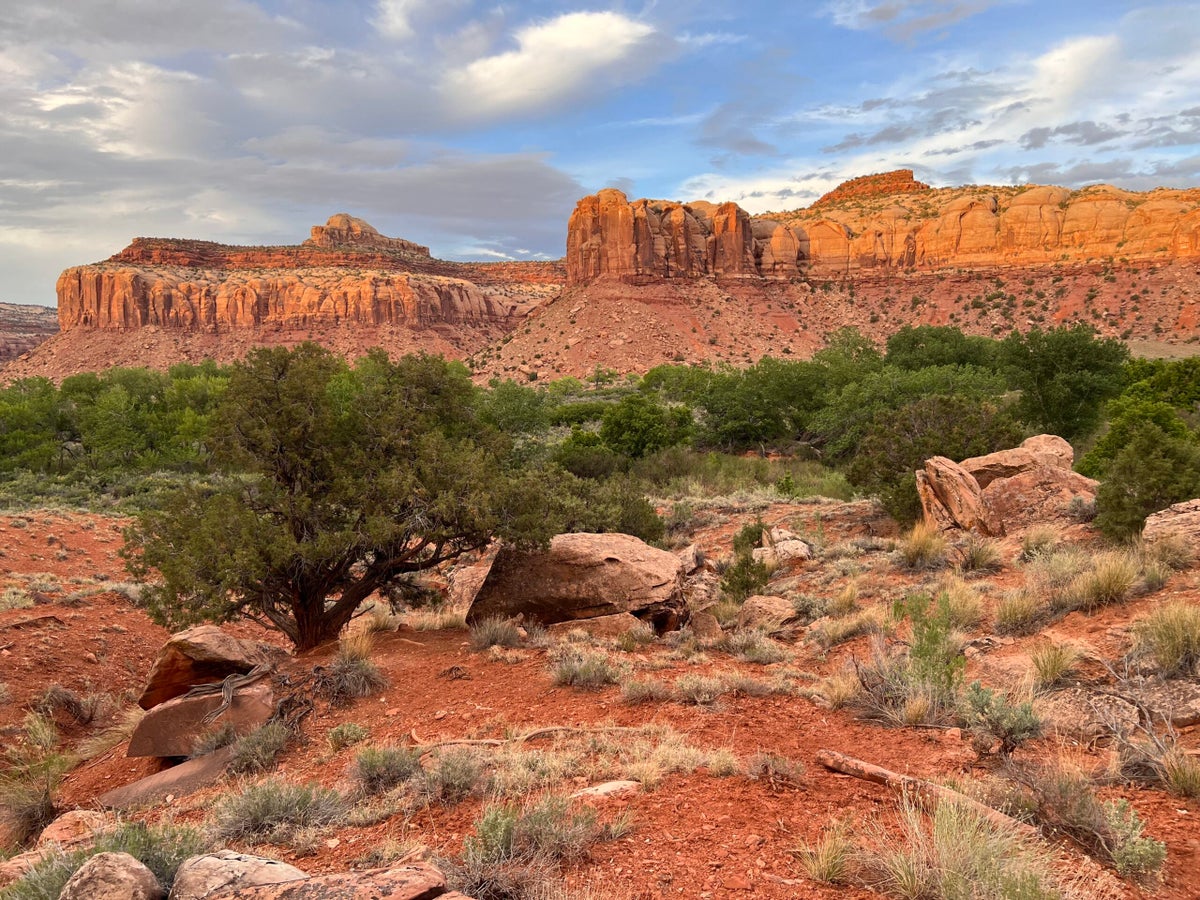
This is a developing story and will be updated periodically with more information.
If you’ve climbed more than a few pitches in Indian Creek, Utah, the crack climbing capital of the U.S., you’ve likely come across a route with “DF” initials carved into a plaque at the base of it.
That’s how Devin “Fin” Finucane prefers to mark his first ascents. Over the past 31 years, Finucane has established 665 new routes, including a host of offwidths and chimneys, in Indian Creek, according to his Climbing Majority podcast appearance in March.
For the time being, however, that 665 number won’t be going up.
On June 12 of this year, Finucane was cited for camping for longer than 14 days in a 30-mile radius on federal land near Indian Creek. Unfortunately for the route developer, a history of prior citations resulted in his case escalating to a one-year ban.
The deal
On July 11, Finucane agreed to observe a one-year ban from 3.6 million acres of public land, including all of Bears Ears National Monument and most public land in southeastern Utah. Specifically, he agreed to avoid any federal public land managed by the Canyon Country District of the Bureau of Land Management (BLM), although he is allowed to pass through on public roads for “necessary travel.”
If he breaks the terms, Finucane will incur an extra, five-year ban from all federal public lands in the state of Utah, as well as a fine and “additional penalties.” Otherwise, he can move to dismiss his guilty plea to the overstay violation.
According to court records, the deal still allows Finucane to climb in non-BLM-managed lands surrounding Bears Ears, including Canyonlands National Park.
Is this the norm?
“It is uncommon for a judge to ban a person from public lands,” says Anna Rehkopf, the Public Affairs Specialist for the Canyon Country BLM. “Generally, this only occurs when there are repeated violations and/or extenuating circumstances.”
First-time offenders can usually expect a warning or a fine of $100 plus $25 per day. Repeated citations will result in a mandatory court appearance and higher fines, according to Rehkopf.
The BLM says that overstays on public land in southeastern Utah have increased over the last few years. “The longer people stay, the more they tend to sprawl,” she says. “Additionally, with new opportunities for internet connectivity in Indian Creek, we are seeing remote working leading to extended stays.”
Fewer new routes in the Creek
Being a first ascensionist in Indian Creek has gotten harder. Earlier this year, Bears Ears National Monument adopted a new management plan that prohibited bolting new routes without BLM and Tribal approval.
Finucane told Climbing that he’s been following the new first ascent regulations, only replacing old anchors around the Creek. “I put up no new routes since the ban. I’ve only updated old anchors this past spring,” he says.
Regarding the ban, Finucane confirmed that he was punished for going over the 14-day camping limit but declined to provide further detail. On July 25, he announced on social media that he will be “staying cool in the alpine until the desert cools down.”
The post Indian Creek’s Biggest Route Developer Just Got Banned for Camping for Too Long appeared first on Climbing.